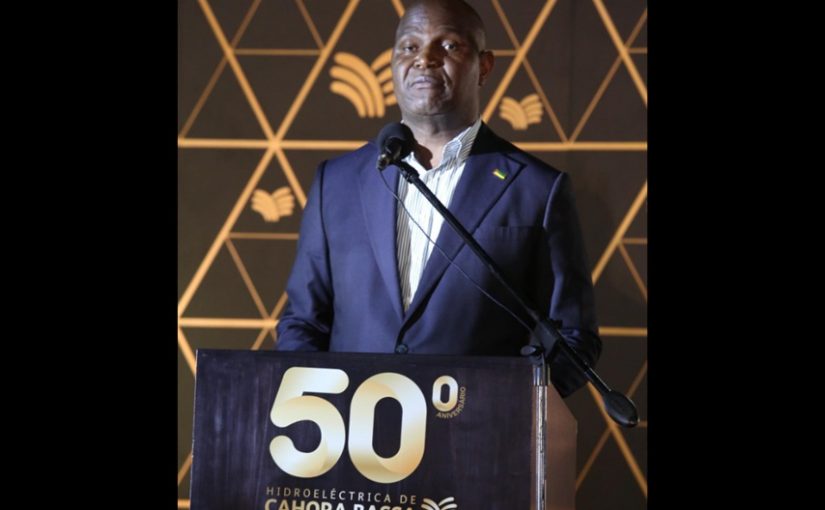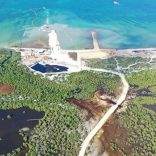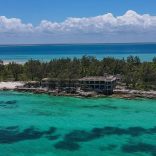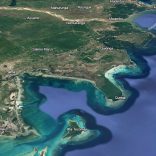World Bank arm backs $400m Mozambique transmission plan
Cahora Bassa Hydroelectric gives hope to Mozambicans – president

Photo: Hidroeléctrica de Cahora Bassa / Facebook
President Daniel Chapo yesterday asked the Cahora Bassa Hydroelectric (HCB) to consolidate its role in the country’s development and urged Mozambicans to be proud of the company’s growth, which “generates hope”.
“[HCB] must consolidate its role in Mozambique’s energy development and adopt strategies to enhance the energy value, an asset of the enterprise for the industrial transformation and economic independence of this beautiful Mozambique,” said Daniel Chapo during the celebrations of HCB’s 50th anniversary, in the town of Chitima, Tete province, in the centre of the country.
The head of state called on HCB to also move forward with projects to rehabilitate its infrastructure, with the goal of becoming a reference and generator of energy for the country and the African continent.
Daniel Chapo highlighted the growth of HCB over the past 50 years, saying that it has become a pillar of national development that generates and supplies clean energy, “generating hope, dignity and progress for millions of Mozambicans”.
“Cahora Bassa is not just a dam, it is a legacy, an idea of the future, a declaration that Mozambique and Mozambicans are capable of dreaming, planning, building and, above all, leading a project of this magnitude,” the President of Mozambique said.
Chapo stated that the transfer of the hydroelectric plant from Portugal to the Mozambican state in 2007 should be a source of pride, as it marked a “new era” in the control of a strategic asset, and that in 2019 it became the first major state-owned company to enter the Mozambican Stock Exchange, recording record profits of 14.1 billion meticais (195.7 million euros) in 2024.
“HCB currently has 1,400 employees, including permanent and seasonal workers, all of whom are Mozambican, which is why HCB is our pride. What seemed impossible a few decades ago, an infrastructure of this size managed exclusively by national staff, is today a living reality, built with competence, responsibility, dedication and a high sense of patriotism,” said the Mozambican president.
“This achievement does not only represent technical independence, it represents full emancipation, confidence in our human potential as Mozambicans and the realization of a vision of a Mozambican company, made by Mozambicans for Mozambique and for Africa,” President Chapo concluded.
HCB is 85% owned by the state-owned Companhia Elétrica do Zambeze and 7.5% by the Portuguese Redes Energéticas Nacionais (REN), with the company owning 3.5% of its own shares, while the remaining 4% are in the hands of Mozambican citizens, companies and institutions.
The HCB reversion agreement, concluded in 2007, allowed control of the dam to pass from the Portuguese State to the Mozambican counterpart, in an event described by the then Mozambican President, Armando Guebuza, as the “second independence of Mozambique”.
The Cahora Bassa reservoir is the fourth largest in Africa, with a maximum length of 270 kilometres and 30 kilometres between banks, occupying 2,700 square kilometres and an average depth of 26 metres, with almost 800 workers, and is one of the largest producers of electricity in the southern African region, supplying neighbouring countries.
According to official figures, HCB has paid €1.588 billion to the Mozambican state since 2007.
Despite these results, HCB has admitted challenges in the production and sale of electricity due to low levels of rainfall, culminating in reduced levels of water storage.
The dam is installed in a narrow gorge of the Zambezi River and its construction took place from 1969 to 1 June 1974, during the Portuguese colonial period, followed by the filling of the reservoir.
Commercial operation began in 1977, with the transmission of the first 960 MW, produced by three generators, compared to the current installed capacity of 2,075 MW.












Leave a Reply
Be the First to Comment!
You must be logged in to post a comment.
You must be logged in to post a comment.